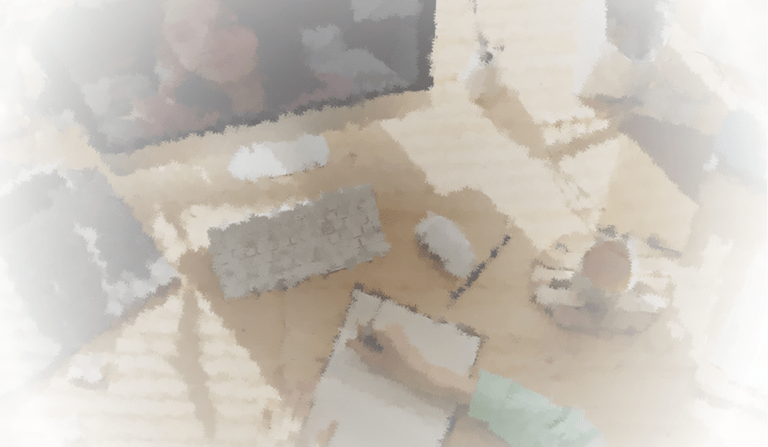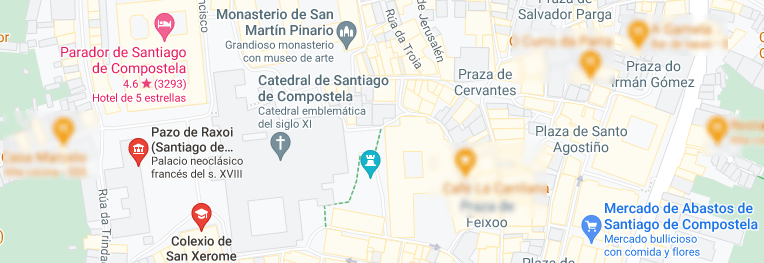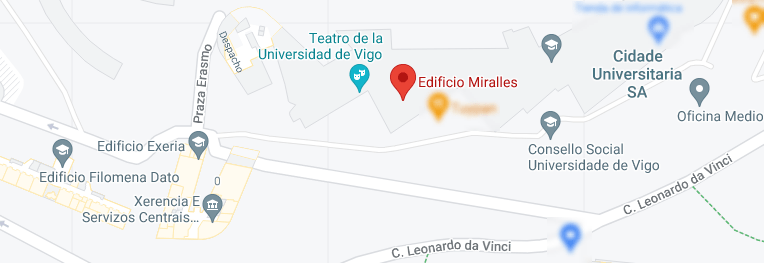240144
1ra Edición
Introduction to polygonal modelling with Blender 3D

Horas:
25 horas
Financiación:
Aporte Universidades
Destinatarios:
Persoal PAS, Persoal PDI
Prazas
Datas, Horarios e Sesións
Data Inicio
27/09/2024
Data Peche
11/11/2024
Tipos Formación
Formación Online
Aula virtual (Webinars)
Datas e horarios
Luns
Venres
Número Webinars
13
Enlace ao curso
Enlace non requirido ou non creado o curso na plataforma de formación.
Necesidades, prerrequisitos e inf. xeral
Necesidades a cubrir
Introduce students to an Open Source 2D and 3D digital creation environment, standard in various industries.
Prerrequisitos
Development on Windows, MacOS or Linux. Availability of access to a computer to develop the course.
Carácter
13 live sessions in videoconference format and use of the CIXUG virtual classroom: httpss://www.cursos.cixug.es
Medios necesarios
A computer that, without having to be especially powerful, must be relatively recent (approximately 5 years old), and have characteristics that allow it to move a 3D scene with ease.
Datos persoal Formador e Titor
Persoal formador
Rafael Tenorio Aranguren
Empresa contratada
Rafael Tenorio Aranguren
Titor
CIXUG
Descrición
Competencias a desenvolver
With the completion of this course participants will acquire knowledge about:
- The Blender tool and its community
- The Blender graphical interface
- Modelling strategies
- Blocking
- Creation of PBR materials and textures
- UV object coordinates
- Lighting and cameras
- Scene preparation and rendering
- Animation
- Particle system
- Blender extensions
Metodoloxía
The course will combine theoretical training on a number of general topics with practical training through the creation of a simple 3D scene.
Through the theory you will acquire general knowledge of the 3D creation industry and Blender 3D software, and through the practical part you will gain the basic skills to develop a complete 3D model.
The course will be taught in a live videoconference format with the trainer, through the Zoom application.
These videoconferences will be distributed as follows:
- 1st session, Friday 27 September from 9:00 to 11:00 a.m.
- 2nd session, Monday 30 September from 9:00 to 10:00 a.m.
- 3rd session, Friday 4 October from 9:00 to 11:00 a.m.
- 4th session, Monday 7 October from 9:00 to 10:30 am
- 5th session, Friday, 11 October from 9:00 to 12:00
- 6th session, Monday, 14 October from 9:00 to 10:00
- 7th Session, Friday, 18 October from 9:00 to 11:00 a.m.
- 8th session, Monday 21 October from 9:00 to 10:30 a.m.
- 9th session, Friday 25 October from 9:00 to 12:00
- 10th session, Monday 28 October from 9:00 to 10:30 a.m.
- 11th session, Monday 4 November from 9:00 to 10:30 a.m.
- 12th session, Friday, 8 November from 9:00 to 12:00
- 13th session, Monday 11 November from 9:00 to 10:30 a.m.
Temario
1.- Introduction
2.- What is Blender 3D?
- Origin of Blender 3D
- Open source software
- Fields of direct application of Blender 3D
- Indirect application fields
- Frequency of updates
- Contribution to code development
3.- Learning the tool based on the development of a practical exercise
- Choose a model that suits our level of use.
- Establish what the use of that model will be
- Establish what is the level of definition that the model should have according to its use.
- Choose good references for the model
- Establish a strategy to undertake the work
4.- First steps
- Downloading Blender 3D
- Installing Blender 3D
- The Blender 3D settings window
- System settings
- Input settings
- Installing Addons
5.- The graphical interface
- The workspaces
- The workspace layout
- The 3D window
- The editor selector
- The outliner
- The properties panel
- The timeline
- Adding windows to our environment
- Saving our favourite configuration
6.- Preparing the workspace
- The modeling workspace
- The 3D window
- The T tool menu
- The options menu N
- The visualisation gizmo
- The snapping options
- The 3D cursor
7.- Modelling strategies
- Loading the reference images in the 3D window
- Division of the reference object into its key components
- Searching for geometrical relations between the components of the reference object
- Establishing a modelling strategy
- Establishing which components of the reference object are to be modelled and which are to be simulated with textures.
8.- Blocking
- Adding objects to the scene
- Object and editing modes
- The geometric elements of an object
- Basic transformations of the elements of an object
- Advanced transformations of the elements of an object
- Transformations in object mode: modifiers
- Constructing the base structure of the reference object
9.- Model detailing
- Recursive model
- Topology cleaning
- Quads, tris and ngons
- The subdivision surface modifier
10.- Creation of PBR materials
- Physically based rendering materials
- The shading workspace
- Working with nodes
- Shader principled bsdf
- Dielectric materials
- Conductive materials
11.- Obtaining uv coordinates of objects
- The uv editing workspace
- uv coordinates of an object
- Definition of the seams in the topology of an object
- Obtaining maps with uv coordinates of an object
12.- Texture creation
- The texture paint workspace
- Procedural textures
- Bitmap textures
- Texture channels of a material
- Real-time texture painting
13.- Lighting
- Types of lights in Blender
- Adjusting the types of lights
- Characteristics of shadows
- Creating an environment
- Lighting with an environment
- Lighting with objects
14.- Cameras
- The Blender 3D camera
- Blender 3D camera parameters
- Scene resolution settings
- Scene framerate settings
- Camera transformations
15.- Scene preparation
- Creating a backdrop for our scene
- Lighting the scene
- Positioning the camera in the scene
- Adjusting the composition of the image to be rendered
16.- Rendering the scene
- The rendering workspace
- Real-time and offline engines
- Eevee and cycles
- Real-time engine settings
- Offline engine settings
- Image rendering
- Animation rendering
17.- Extending Blender I - visual programming
- The geometry nodes workspace
- What is geometry nodes
- The node editor
- What is a nodetree
- Types of nodetrees
- Automating tasks with visual programming
18.- Extending Blender II - addons
- Installing addons
- Addons included in the Blender installation
- Free addons
- Paid addons
- Automating tasks with the Blender API
19.- Animation
- The animation workspace
- Types of animation
- Transformation animation
- Animation of materials
- Simulations of physical behaviour
20.- Particle systems
- What are particle systems
- Uses of particle systems
- Emitter type systems
- Hair-type systems
- Application of materials to particle systems
21.- Extending Blender III - the community
- Blender today / Blender hoy
- Blender conference
- Blediberia
- Blenderartists
- Blendernation
- Blendtuts
- Cgboost
- Cgcookie







